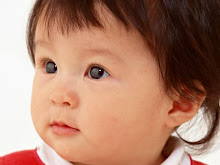MULTIMEDIA PROJECT
!!
HOMEPAGE !!
Home.html
<html><title>!!
Crime Against Women !!</title>
<body
background="background\1.jpg" leftmargin="50">
<center><h1
style="background-color:brown;">
<font
face="Britannic Bold" size="7" color="white">
VIOLENCE
AGAINST WOMEN</font></h1></center><br><br>
<div
id='container'><p align="right"><img
src="background\3.jpg" style=
'float: right;'/><br><br>
<button
type="button"><font face="berlin sans fb demi"
size="6" color="blue">
CRIME
AGAINST WOMEN</button><br>
<a
href="crime.html" target="_blank"><button
type="button">Click Me !!</button></a><br><br>
<button
type="button">
<font
face="berlin sans fb demi" size="6"
color="blue">
STEPS
TAKEN AGAINST</button><br>
<a
href="steps.html" target="_blank"><button
type="button">Click Me !!</button></a><br><br>
<button
type="button"><font face="berlin sans fb demi"
size="6" color="blue">
REPORTS
& INFORMATION</button><br><a href="reports.html"
target="_blank">
<button
type="button">Click Me !!</button></a><br><br>
!!
LINKINGS !!
Crime.html
<html><title>!!
Crime Against Women !!</title>
<body
background="background\2.png" leftmargin="50">
<center><h1
style="background-color:brown;"> <font face="Britannic
Bold" size="7" color="white">
!!
CRIME AGAINST WOMEN !!</font></h1></center>
<p
style="background-color:black;"><font face="maiandra
gd" size="5" color="yellow">
Over
32000 murders, 19,000 rapes, 7500 dowry deaths and 36500 molestation cases are
the violent crimes reported in India in 2006 against women. There are many
instances of crime especially against women go unreported in India. These are
figures released by the National Crime Records Bureau recently.</p>
<p
style="background-color:black;"><font face="maiandra
gd" size="5" color="red">
While
Madhya Pradesh is worst off among the states, the national capital New Delhi
continues to hold on to its reputation of being the most unsafe city in India.
Delhi takes the top slot for crimes ranging from murders and rapes to dowry
deaths and abductions.</p>
<p
style="background-color:black;"><font face="maiandra
gd" size="5" color="yellow">
It
reflects country's law and order situation when its capital is a cauldron of
crime. Instead of leading the way in tackling crime, Delhi only seems to do
worse year after year. For instance while the national crime rate declined
negligibly by .02 % in 2006; Delhi's rate grew to 357.2more than double the
national average of 167.7.</p><br>
<center><h1
style="background-color:brown;"> <font face="Britannic
Bold" size="7" color="white">
!!
SOME IMAGES FOR CRIME AGAINST WOMEN
!!</font></h1></center><br>
<center><img
src="crime\1.jpg" width=500
height=400 style="max-width:100%;border:10px ridge #545565;">
<img
src="crime\2.jpg" width=500
height=400 style="max-width:100%;border:10px ridge #545565;">
<img
src="crime\3.jpg" width=500
height=400 style="max-width:100%;border:10px ridge #545565;">
<img
src="crime\4.jpg" width=500
height=400 style="max-width:100%;border:10px ridge #545565;">
<br><br><br></body></html>
Steps.html
<html>
<title>!!
Crime Against Women !!</title>
<body
background="background\2.png" leftmargin="50">
<center><h1
style="background-color:brown;"> <font face="Britannic
Bold" size="7" color="white">
!!
STEPS TAKEN BY GOVERNMENT !!</font></h1></center>
<center><img
src="steps\1.jpg" width=500
height=400 style="max-width:100%;border:10px ridge #545565;">
<img
src="steps\2.jpg" width=500
height=400 style="max-width:100%;border:10px ridge
#545565;"></center>
<p
style="background-color:yellow;"><b><font
face="impact" size="6" color="black">
!!
16 STEPS POLICY AGENDA !! AGAINST CRIME TO WOMEN</p>
<ol
style="background-color:black;" align="left">
<font
face="maiandra gd" size="5" color="red">
<li>
Ratify international and regional treaties …
<li>
Adopt and enforce laws …
<li>
Develop national and local action plans …
<li>
Make justice accessible to women and girls …
<li>
End impunity towards conflict-related sexual violence …
<li>
Ensure universal access to critical services …
<li>
Train providers of frontline services …
<li>
Provide adequate public resources…
<li>
Collect, analyze and disseminate national data…
<li>
Invest in gender equality and women’s empowerment …
<li>
Enhance women’s economic empowerment …
<li>
Increase public awareness and social mobilization …
<li>
Engage the mass media …
<li>
Work for and with young people as champions of change …
<li>
Mobilize men and boys …
<li>
Donate to the UN Trust Fund to End Violence against Women …</ol>
<p
style="background-color:yellow;">
<b><font
face="impact" size="6" color="black">
!!
PRIORITY ACTIONS FOR PARLIAMENT !! AGAINST CRIME TO WOMEN</p>
<ul
style="background-color:black;">
<font
face="maiandra gd" size="5" color="red">
<li>
Priority 1: Adopt laws that work
<li>
Priority 2: Make sure laws are implemented
<li>
Priority 3: Educate and sensitize
<li>
Priority 4: Build partnerships
<li>
Priority 5: Show strong political will
<li>
Priority 6: Establish a sound institutional framework</ul>
<center><h1
style="background-color:brown;">
<font
face="Britannic Bold" size="7" color="white">
!!
SOME STEPS TAKEN AGAINST CRIME TO WOMEN !!
</font></h1></center><br>
<center><img
src="steps\3.jpg" width=500
height=400 style="max-width:100%;border:10px ridge #545565;">
<img
src="steps\4.jpg" width=500
height=400 style="max-width:100%;border:10px ridge #545565;">
<img
src="steps\5.jpg" width=500
height=400 style="max-width:100%;border:10px ridge #545565;">
<img
src="steps\6.jpg" width=500
height=400 style="max-width:100%;border:10px ridge #545565;">
</center><br><br><br>></body></html>
Reports.html
<html>
<title>!!
Crime Against Women !!</title>
<body
background="background\2.png" leftmargin="50">
<center><h1
style="background-color:brown;">
<font
face="Britannic Bold" size="7" color="white">
!!
REPORTS ON CRIME AGAINST WOMEN !!
</font></h1></center>
<center>
<img
src="reports\1.png" width=500
height=400 style="max-width:100%;border:10px ridge #545565;">
<img
src="reports\2.jpg" width=500
height=400 style="max-width:100%;border:10px ridge
#545565;"></center>
<h1
style="background-color:yellow;">
<font
face="impact" size="6" color="black">
INDIA
IS THE 4TH MOST DANGEROUS PLACE IN THE WORLD FOR WOMEN</h1>
<ol
style="background-color:black;">
<font
face="maiandra gd" size="5"
color="red"><b>
<li>
AFGHANISTAN<li> CONGO
<li>
PAKISTAN<li> INDIA<li> SOMAL</b></ol>
<p
style="background-color:yellow;">
<b><font
face="impact" size="6" color="black">
!!
13 REPORTS OF VIOLENCE AGAINST WOMEN IN INDIA !! JAN-FEB 2013</p>
<ol
style="background-color:black;" align="left">
<font
face="maiandra gd" size="5" color="red">
<li>
26 Yr Old Woman Beaten And Poisoned To Death By Her In Laws For Dowry
<li>
Ex Boyfriend And Friends Arrested For For Abusing And Molesting Girl
<li>
Suspended Police Constable Arrested On Rape Charges
<li>
Karnataka: 24 Aborted Foetuses Found Abandoned In The Road Side
<li>
Bodies Of 3 Minor Girls Found In A Well. Police Suspect Sexual Assault Before
Murder
<li>
Bangalore: Woman Gang Raped On Her Way Back From Church. 8 Arrested So Far
<li>
2 Awarded Death Sentence For Murder Of A Minor Girl And Rape Of Her Friend In
2007
<li>
Dowry Harassment Victim Speaks Up. Police Book All The 5 Accused
<li>
Kerala: Woman Gangraped By Four Unidentified Men. Investigations On
<li>
Dutch Teenager Raped In Auto By Driver And Accomplice. Mumbai Police
Launches Manhunt
<li>
Man Arrested For Raping A 9 Yr Old Girl And Also Sexually Abusing His 12 Yr Old
Son
<li>
Abduction And Rape Of Minor Girl In Mangalore. Another Accused Arrested
<li>
Girl Ends Life After Youths Took Lewd Pics Without Her Knowledge And Spread
It</ol>
<center><h1
style="background-color:brown;">
<font
face="Britannic Bold" size="7" color="white">
!!
SOME REPORTS AGAINST CRIME TO WOMEN !!
</font></h1></center><br>
<center><img
src="reports\3.png" width=500
height=400 style="max-width:100%;border:10px ridge #545565;">
<img
src="reports\4.jpg" width=500
height=400 style="max-width:100%;border:10px ridge #545565;">
<img
src="reports\5.jpg" width=500
height=400 style="max-width:100%;border:10px ridge #545565;">
<img
src="reports\6.bmp" width=500
height=400 style="max-width:100%;border:10px ridge #545565;">
</center><br><br><br>></body></html>















